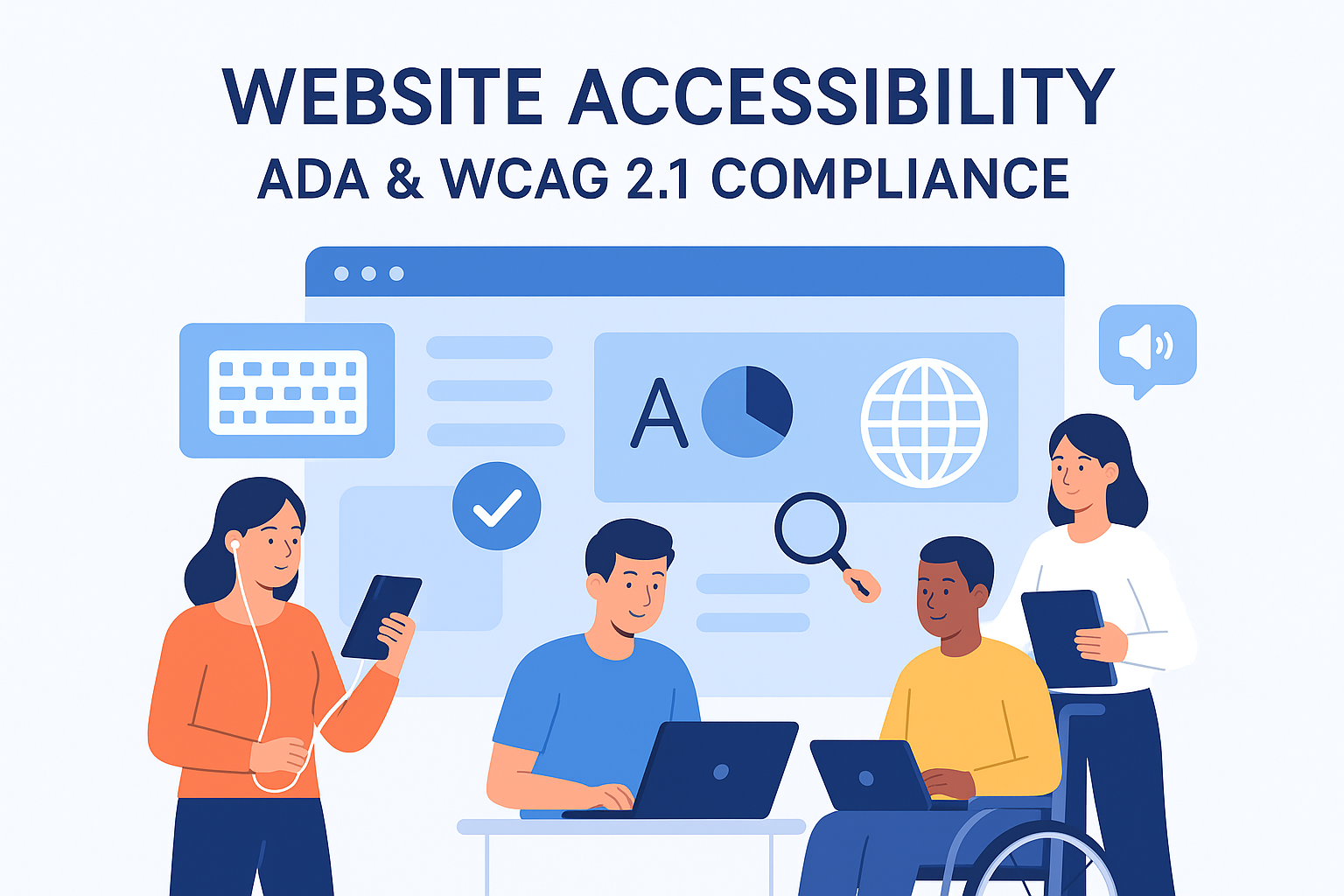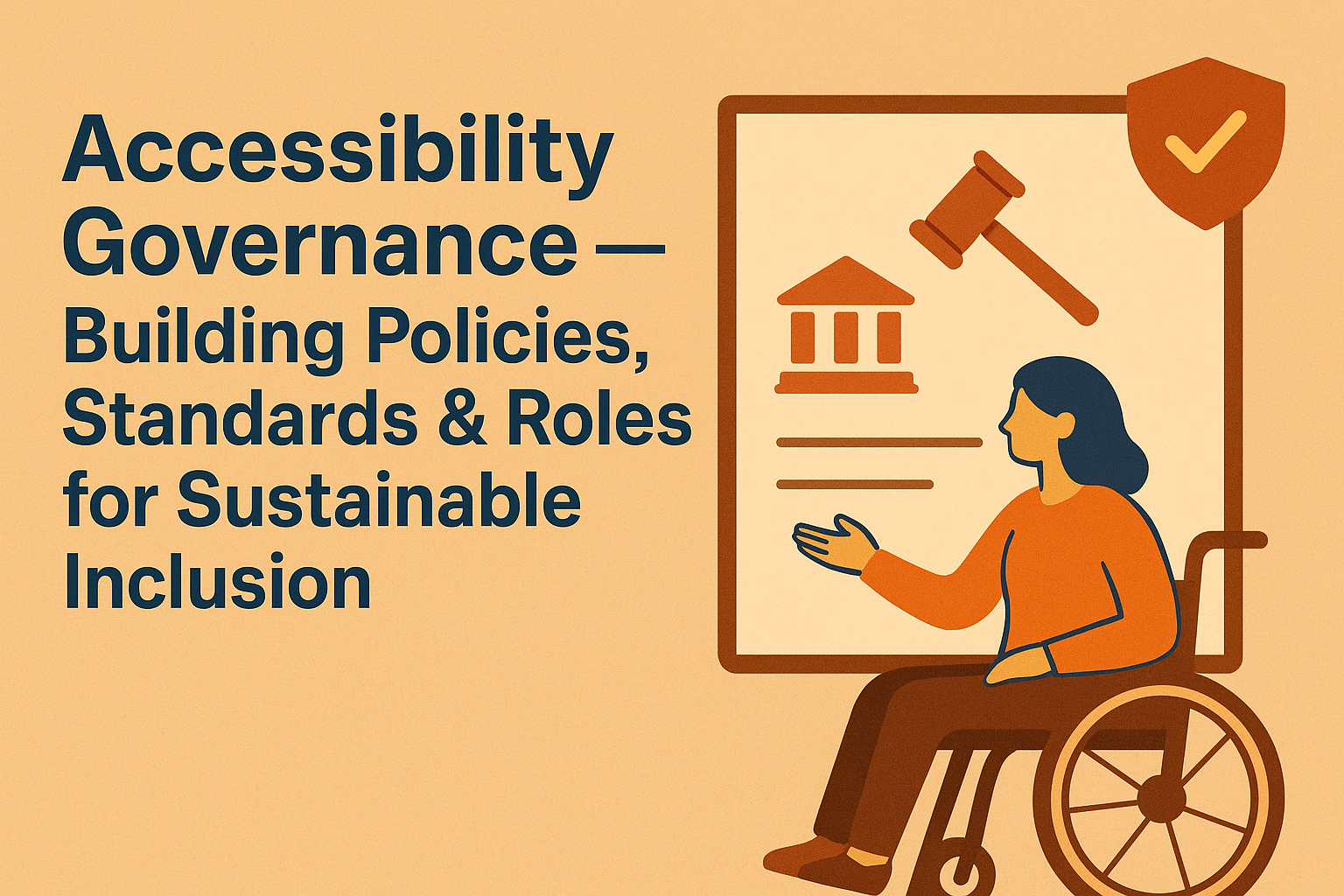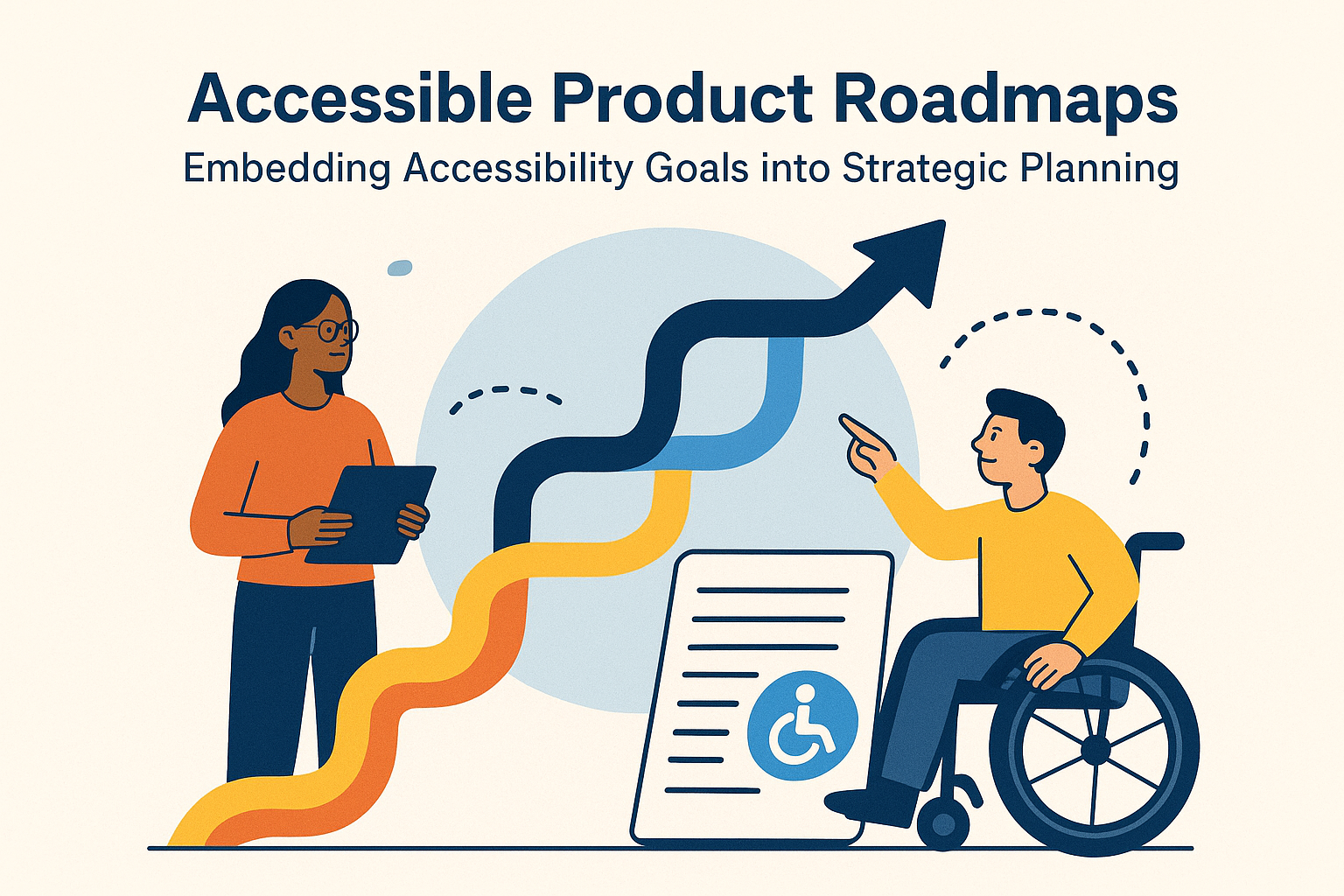How to Make Your Website ADA & WCAG 2.1 Compliant in 2025
💡 Introduction: Why Website Accessibility Matters
In today’s digital-first world, your website is often the first point of contact between your business and potential customers. But what if some visitors can’t read your content, use your navigation, or interact with your forms?
That’s where web accessibility comes in. Ensuring your website is ADA (Americans with Disabilities Act) and WCAG 2.1 (Web Content Accessibility Guidelines) compliant isn’t just about following rules — it’s about creating equal digital access for everyone.
In 2025, accessibility has become a core ranking factor for SEO, user experience, and legal protection. Let’s explore how you can make your website fully compliant and user-friendly for all.
🧠 What Is ADA & WCAG 2.1 Compliance?
ADA Compliance
The Americans with Disabilities Act (ADA) prohibits discrimination against individuals with disabilities.
In the digital context, this means your website must provide equal access to all users, including those with visual, hearing, cognitive, or mobility impairments.
WCAG 2.1 Standards
The Web Content Accessibility Guidelines (WCAG 2.1) provide a framework for making web content accessible.
Developed by the W3C (World Wide Web Consortium), they focus on four key principles:
- Perceivable – Content should be visible and understandable.
- Operable – Navigation and interaction must be possible via multiple methods (keyboard, screen readers, etc.).
- Understandable – Information and interfaces should be easy to comprehend.
- Robust – Content must work across all devices and assistive technologies.
Compliance levels include:
- A: Basic accessibility requirements.
- AA: The standard level required for most organizations.
- AAA: Advanced accessibility, often optional.
🛠️ Steps to Make Your Website ADA & WCAG 2.1 Compliant
1. Perform an Accessibility Audit
Start by running a full website accessibility audit using both automated and manual testing to identify issues like:
- Missing image alt text
- Poor color contrast
- Broken ARIA labels
- Non-keyboard-friendly navigation
Pro Tip: Tools like WAVE, axe DevTools, or an accessibility widget can quickly highlight accessibility gaps.
2. Ensure Keyboard Navigation
Every part of your website should be accessible using only a keyboard.
- Focus indicators (visible outlines when users tab through elements)
- Skip navigation links
- Functional dropdown menus and forms
This helps users who cannot use a mouse.
3. Add Proper Alt Text for Images
Images are key to web content but must be readable by screen readers. Use descriptive, meaningful alt text that explains the image’s purpose rather than just “image” or “photo.”
Example: Instead of alt="button", use alt="Add to cart button for accessibility widget subscription".
4. Maintain Color Contrast
Ensure text and background colors meet WCAG 2.1 contrast ratios:
- Normal text: 4.5:1
- Large text: 3:1
Use contrast checkers to verify your design is accessible for people with visual impairments or color blindness.
5. Provide Text Alternatives for Media
- Captions for videos
- Transcripts for audio
- Text descriptions for visual content
This ensures inclusivity for users with hearing or vision challenges.
6. Create Accessible Forms
- Clear labels and instructions
- Error messages that are easy to understand
- Logical tab order
For example, every input field should have a corresponding <label> tag.
7. Install an Accessibility Widget
- Font resizing
- Color contrast adjustment
- Text-to-speech
- Keyboard navigation shortcuts
- Screen reader compatibility
This is a fast, cost-effective way to boost compliance and user satisfaction without a full redesign.
8. Add an Accessibility Statement
Include an accessibility statement that explains your commitment to inclusion, outlines the measures you’ve taken, and provides contact info for accessibility-related feedback.
“We are committed to ensuring digital accessibility for all users.
If you experience any difficulty accessing content on our site, please contact us at [email].”
⚖️ Legal & Business Benefits of ADA Compliance
- Avoid Legal Risks: ADA lawsuits for inaccessible websites are rising every year.
- Improve SEO: Accessible websites load faster, reduce bounce rate, and rank higher.
- Reach More Users: Over 15% of the global population has some form of disability.
- Boost Brand Reputation: Accessibility shows social responsibility and inclusiveness.
🚀 Quick Checklist for 2025
| Task | Description | Status |
|---|---|---|
| Accessibility audit | Run using automated & manual tools | ✅ |
| Keyboard navigation | Ensure full site navigation via keyboard | ✅ |
| Alt text | Add descriptive alt text to all images | ✅ |
| Color contrast | Meet WCAG 2.1 AA standards | ✅ |
| Accessible forms | Include labels, clear instructions, ARIA attributes | ✅ |
| Accessibility widget | Install for enhanced usability | ✅ |
| Accessibility statement | Publish on website footer | ✅ |
🧭 Conclusion: Build an Inclusive Web Experience
Making your website ADA & WCAG 2.1 compliant is not just about avoiding lawsuits — it’s about empowering everyone to use your digital space equally.
With accessibility improvements and the right tools — like an accessibility widget — you can easily create a website that’s inclusive, compliant, and future-ready.





